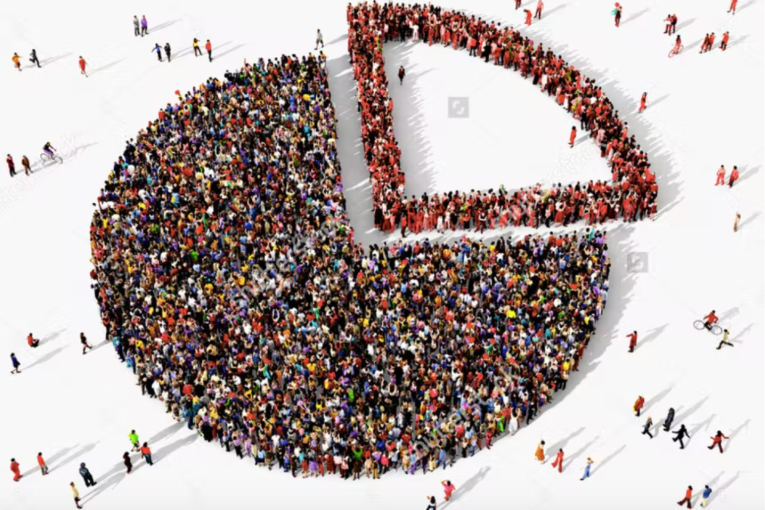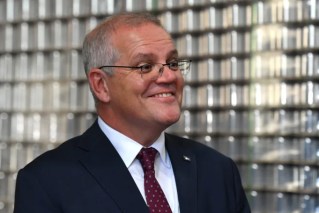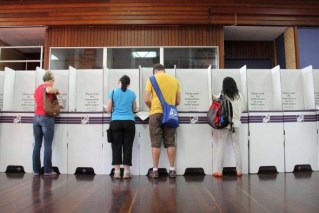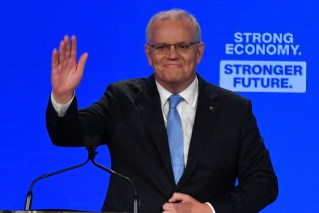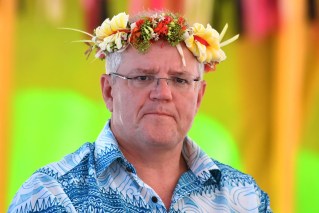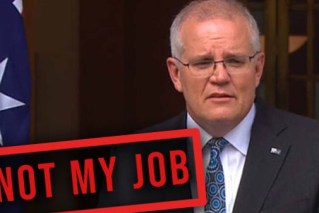Let’s face it – we’re addicted to polls, even if they’ve got things so wrong in the past
Another day, another poll and, just a day to go, one more poll is on its way. Dennis Atkins has a guide to what the polls have told us and what we might learn in the last hours of this exhausting campaign.

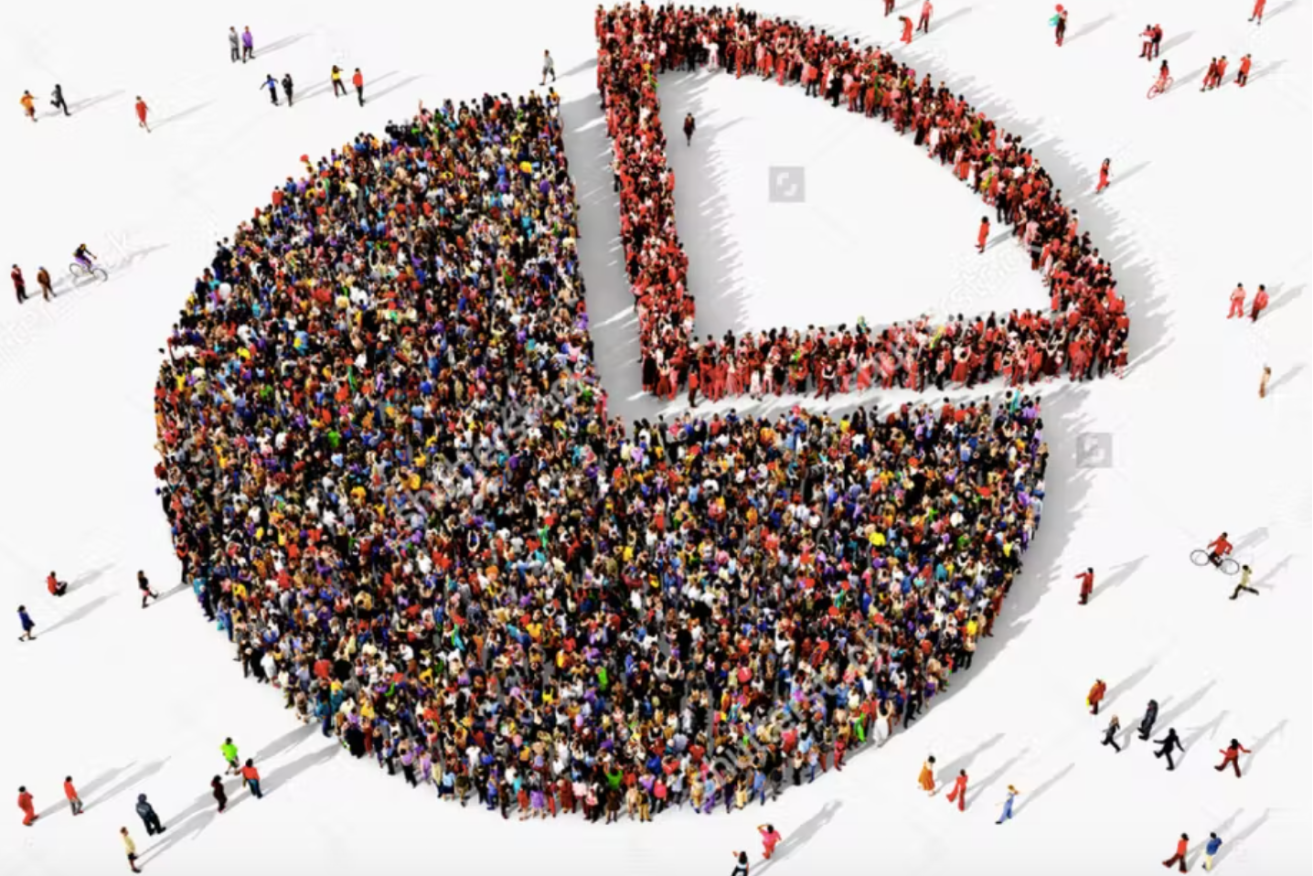
Despite their recent misfires, we're still watching opinion polls closely. (Photo: The Conversation / Arithmedes)
Despite having all but sworn off opinion polls three years ago, we have again hooked up to the drip and started running around with our hair on fire whenever someone publishes a new survey.
Just 24 hours before Australians finally get around to voting in person – or that 65-70 percent who have not already marked their ballot papers in pre polls or postal votes – we reacted to the fifth national survey in seven days like a bus load of school kids overdosing on red cordial.
In 2019 everyone promised never to take election polls so seriously again after what was seen as an opinion survey industry-wide failure to get the outcome right. Of course, the poll outcomes were not that wrong. There was some undercounting of the Liberal primary vote but the two party preferred was well within the margin of error.
It was more a case of what’s known as herding – the conscious or unconscious second-guessing of other polling firms so that no one got too far out of step. Renowned polling whiz kid in the United States, Nate Silver from the website 538, pinned the Australian polling performance in 2019 as a clear case of herding.
This time there is no obvious repeat of that behaviour. There is more noise among polls – created by different firms recording movements this way or that – which is indisputably a good thing.
An interesting thought on the herding thesis is that the polling industry is clearly working to avoid any chance of that happening in 2022 but those who report the polls haven’t done the self assessment and are repeating their mistakes from 2019.
As the 1952 Al Hoffman and Dick Manning song It Takes Two To Tango suggests there needs to be an interpretative accomplice in any herding event.
The media in 2019 were more at fault than the polling companies because they set up the narrative of “Labor can’t lose”. They left all of the blame at the feet of the pollsters, absolving themselves of any need for analysis or reflection.
Freed from responsibility they are doing what looks like the same thing again with what many in the media clearly think is a necessary (or convenient) historical correction: the polls are tightening and Labor might lose.
However, a look under the hood of the national polls rolled out during the past six weeks shows there is more agreement than difference.
A few obvious undercounts of primary support for either Labor or the Coalition (both parties dipped down to the 29/31 percent range which is probably too low for either one) masked the more common steadiness in outcomes.
Through the polls published during the campaign a few trends have been apparent more often than not (and were there again in today’s Ipsos survey in the Financial Review).
The main ones are that the Labor primary vote has been one to three points ahead of the Coalition in almost every survey.
This Labor vote just shy of 40 percent climbs to almost 50 percent when combined with a Greens vote share of 10-13 percent. At this level losing is going to be very difficult.
Beyond this, “independents” collect about 7 percent of the vote across most polls while One Nation and United Australia jump around at four or five points. Any leftovers are often described as others.
Out of this spread of primary support comes a variety of two party preferred outcomes which this year is more confusing than ever before and certainly less comprehensible than needs be.
Newspoll is Australia’s best performing national poll with a long historical series and its commitment and resources have only been enhanced after the company was acquired by British based polling giant YouGov.
Newspoll doesn’t trick up its two party preferred votes which makes them accessible and understandable – whether the calculations are 51/49 or something wider like 55/45.
Other polls look more like “every player wins a prize” affairs which show a “range” of two-party outcomes and even two slightly different primary counts. It’s enough to make close observers doubt their sanity.
Luckily there are a range of websites that analyse these poll shaped objects as they’re known with the best being Kevin Bonham’s blog, the Poll Bludger, and the Tally Room.
There are also a number of statistical forecasters including Australian Electoral Forecasts, Armarium Interreta, Mark the Ballot and Buckley & None who run systems analyses (such as the apparently well known Hamiltonian Monte Carlo method – who knew) to calculate the statistical probability of winning in every seat.
All of these are fascinating tools.
There is one more big poll dropping before we all get to vote and that is the last day Newspoll conducted by YouGov. It will be a big sample – at about 2000 the same size as Ipsos – and will carry the weight of the industry on its shoulders.
As in 2019 when Newspoll led the way as the poll that “got it wrong” (they didn’t get it that wrong by the way), they will be tested on the accuracy of this final survey. Considering Newspoll has worked harder at ironing out any bumps and crinkles after 2019 (they were spot on in the last poll published for the South Australian state poll in March this year), we can expect a robust effort.
All this aside, two things worth remembering are that Australian political polls are as good as any in the world and no other group of public opinion firms has done more to improve their methods and outcomes.
In 2019 we under-analysed the polls, this time we are over-analysing them.
